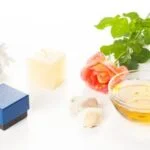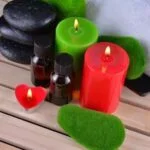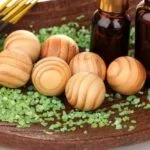Bath and Body Works Aromatherapy Soap has gained a devoted following for its luxurious scents and purported therapeutic benefits. However, amidst the growing concern about the potential health risks associated with certain ingredients in personal care products, many consumers are now questioning whether this beloved soap contains parabens.
The use of parabens in cosmetics has sparked controversy due to their possible links to adverse health effects. In this article, we will explore the presence of parabens in Bath and Body Works Aromatherapy Soap, shed light on the role of parabens in personal care products, and discuss the company’s efforts to provide paraben-free alternatives.
Parabens are commonly used as preservatives in cosmetics, including soaps, lotions, and shampoos. These chemicals help prevent the growth of bacteria and mold, extending the shelf life of products. However, concerns have been raised about the potential risks associated with long-term exposure to parabens, such as disrupting hormone function and increasing the risk of certain cancers. As a result, consumers are becoming increasingly vigilant about reading product labels and choosing paraben-free options.
In this article, we will delve into the world of Bath and Body Works Aromatherapy Soap to understand its formulation and ingredients. We will also examine Bath and Body Works’ stance on parabens in their products, as well as their commitment to offering alternative formulas free from these controversial preservatives. It is crucial for consumers to be informed about the products they use on their skin, given the potential impact on both skin health and overall well-being.
What Are Parabens?
Parabens are a group of synthetic compounds commonly used as preservatives in cosmetics, including soaps, lotions, and other personal care products. They are favored by manufacturers for their ability to prevent the growth of bacteria, mold, and yeast in products, extending their shelf life. Some common types of parabens found in beauty and skincare products include methylparaben, ethylparaben, propylparaben, and butylparaben.
The controversy surrounding parabens arises from concerns about their potential impact on human health. Studies have suggested that parabens can mimic estrogen in the body, leading to hormone disruption and potentially contributing to the development of certain cancers. While the research on this topic is ongoing and inconclusive, it has raised red flags within the beauty industry and among consumers who are increasingly seeking out paraben-free alternatives.
In response to these concerns, many cosmetics companies have begun offering paraben-free product lines to cater to a growing market of health-conscious consumers. This shift reflects a collective effort to provide safer options for individuals who wish to avoid potential exposure to parabens in their daily skincare routines.
- Unhealthy Effect: Potential hormone disruption and links to cancer
- Presence in Products: Commonly found in cosmetics such as soaps and lotions
- Industry Response: Many companies now offer paraben-free alternatives
Reading the Label
Bath and Body Works Aromatherapy Soaps have become a popular choice for consumers looking to incorporate self-care and relaxation into their daily routines. With a variety of scents designed to promote different moods and emotions, these products have gained a loyal following. However, one common concern among consumers is the presence of parabens in personal care items.
Parabens are synthetic preservatives commonly used in cosmetics and skincare products to extend shelf life and prevent the growth of bacteria and mold. Many individuals question whether Bath and Body Works Aromatherapy Soaps contain parabens, as they strive to make informed decisions about the products they use on their bodies.
When it comes to understanding the ingredients in Bath and Body Works Aromatherapy Soaps, it is essential to know how to read the product label effectively. The ingredient list can be found on the packaging, typically listed in descending order based on concentration.
This allows consumers to identify what key components are included in the soap and whether it contains parabens or other potential irritants. Additionally, familiarizing oneself with common names for parabens such as methylparaben, ethylparaben, propylparaben, and butylparaben can help consumers spot these preservatives on product labels.
It is important for individuals to note that Bath and Body Works offers some paraben-free formulas within their Aromatherapy Soap line. The company has made efforts to provide alternatives for those who prefer paraben-free products. This commitment to offering options free from potentially harmful preservatives demonstrates an awareness of consumer concerns regarding ingredient safety.
| Key Points | Data |
|---|---|
| Concern About Parabens | Bath & Body Works’ customer inquiry about the presence of parabens. |
| Parabeans Definition | Synthetic preservatives used in skincare products. |
| Reading Label Importance | Understanding key components in soap; detecting presence of parabens. |
Bath and Body Works Aromatherapy Soap
When it comes to personal care products, many consumers are becoming increasingly conscious about the ingredients they put on their skin. This includes being mindful of potentially harmful substances such as parabens. Bath and Body Works, a popular brand known for its wide range of fragrant body care products, including Aromatherapy Soap, has also come under scrutiny regarding the presence of parabens in their formulas. So, does Bath and Body Works Aromatherapy Soap have parabens?
Exploring Bath and Body Works’ Stance on Parabens
Bath and Body Works has taken a clear stance when it comes to parabens in their products. The company understands the growing concerns about using parabens in personal care items and has made efforts to address this issue.
In response to the demand for cleaner beauty products, Bath and Body Works has developed paraben-free formulas for some of its product lines, including Aromatherapy Soap. This is part of the company’s commitment to providing safer options for consumers who are looking to avoid certain chemicals in their skincare routine.
The Company’s Efforts to Offer Paraben-Free Alternatives
In recent years, Bath and Body Works has made significant strides in formulating products without parabens. The Aromatherapy collection, which is beloved for its soothing scents and therapeutic benefits, now offers many options that are free from these preservatives.
By choosing to go paraben-free, Bath and Body Works aims to reassure customers that they can still enjoy their favorite products without the potential risks associated with paraben use. Ultimately, this demonstrates the company’s commitment to meeting the changing needs and preferences of their customer base.
Making Informed Decisions About Personal Care Products
As consumers continue to prioritize ingredient transparency and product safety, it is essential for them to stay informed about what goes into the items they use daily. With companies like Bath and Body Works taking steps towards offering paraben-free alternatives, individuals are empowered to make choices that align with their values and health goals.
By understanding the stance of brands like Bath and Body Works on parabens in their products, consumers can make more informed decisions about which Aromatherapy Soap or other body care items they choose to incorporate into their routines.
Aromatherapy Soap and Ingredient Transparency
When it comes to selecting personal care products, ingredient transparency is vital for consumers who are concerned about what they are applying to their skin. Bath and Body Works Aromatherapy Soap has garnered a loyal following due to its appealing scents and purported relaxation benefits. However, with the growing awareness of potential health risks associated with certain ingredients, including parabens, consumers are seeking greater transparency from beauty brands.
Transparency in Beauty Products
In recent years, there has been a call for greater transparency in the beauty industry. Consumers want to know exactly what ingredients are present in the products they use on a daily basis. This demand for ingredient transparency extends to Bath and Body Works Aromatherapy Soap as well. With the option to browse through an extensive array of scents and formulas, customers expect clear labeling that identifies all the components within the soap.
Bath and Body Works’ Approach to Transparency
Bath and Body Works has made strides in addressing consumer concerns regarding ingredient transparency. The brand provides detailed information on its website about the various ingredients used in their Aromatherapy Soaps. Furthermore, they have taken steps towards increased disclosure by listing the constituents of their products directly on packaging labels. This effort allows consumers to make informed decisions based on their individual preferences and needs.
Importance of Transparency
Transparency is crucial for consumers who may be allergic or sensitive to certain ingredients, such as parabens. By openly disclosing product ingredients like parabens or offering paraben-free alternatives, Bath and Body Works empowers customers to select items that align with their values and skincare goals. Ingredient transparency also fosters trust between consumers and brands as it demonstrates a commitment to providing safe and effective products.
The Impact of Parabens on Skin and Health
Bath and Body Works Aromatherapy Soap is a popular choice for many consumers looking to indulge in luxurious self-care routines. With its wide range of fragrances and purported mood-boosting effects, it has gained a loyal following. However, there has been growing concern about the potential presence of parabens in personal care products, including Bath and Body Works Aromatherapy Soap.
Parabens are a group of synthetic compounds commonly used as preservatives in cosmetics and personal care products. They are added to prolong the shelf life of these items by preventing the growth of bacteria and mold. However, there is controversy surrounding their safety, with some studies suggesting that parabens can disrupt hormone function and possibly increase the risk of certain health issues.
When reading the label on Bath and Body Works Aromatherapy Soap, it’s important to be aware of common ingredients to look out for, including parabens. Some examples of parabens found in personal care products include methylparaben, propylparaben, ethylparaben, and butylparaben. These ingredients may be listed towards the end of the ingredient list on the product label.
In response to consumer concerns about parabens, Bath and Body Works offers a range of paraben-free formulas for their Aromatherapy Soap line. By eliminating parabens from these products, the company aims to provide safer options for customers who are mindful of their ingredient choices. This move reflects a broader trend in the beauty industry towards offering more transparency and ingredient-conscious options for consumers.
| Bath & Body Works Aromatherapy Soap | Paraben-Free Options |
|---|---|
| Stress Relief – Eucalyptus & Spearmint | Relax – Lavender & Cedarwood |
| Happiness – Bergamot & Mandarin | Energy – Orange & Ginger |
Alternatives to Aromatherapy Soap With Parabens
Bath and Body Works Aromatherapy Soap has gained immense popularity for its delightful scents and purported therapeutic benefits. However, with growing concerns about the potential health risks associated with certain ingredients in personal care products, many consumers are seeking alternatives to Aromatherapy Soaps that do not contain parabens.
Parabens are synthetic preservatives commonly used in cosmetics and personal care products to extend their shelf life by preventing the growth of bacteria and mold. While they have been deemed safe for use in small concentrations by regulatory agencies such as the FDA, there is ongoing debate about their potential long-term effects on health, including their link to hormone disruption and reproductive issues.
When reading the label on Bath and Body Works Aromatherapy Soap, it’s important to look for specific ingredients that may indicate the presence of parabens. It is essential for consumers to be aware of common names for parabens such as methylparaben, propylparaben, ethylparaben, or butylparaben. Taking the time to familiarize oneself with these ingredients can help make more informed choices when selecting personal care products.
Alternatives
- Dr. Bronner’s Pure-Castile Liquid Soap
- JĀSÖN Natural Care Body Wash
- EO Botanical Bubble Bath
As consumers become increasingly conscious of what they apply to their skin, more companies are offering paraben-free alternatives. Bath and Body Works has also recognized this demand and has taken steps to provide paraben-free formulas within their Aromatherapy line. By opting for these paraben-free options, consumers can enjoy the benefits of aromatherapy without worrying about potentially harmful ingredients.
Ultimately, it’s essential for individuals to prioritize transparency and informed decision-making when it comes to choosing personal care products. By understanding the potential implications of using products with parabens and exploring alternative options, consumers can take control of their health and well-being while still indulging in the luxury of aromatherapy soap.
Conclusion
In conclusion, when it comes to Bath and Body Works Aromatherapy Soap, the question of whether it contains parabens is a valid concern for many consumers. As we have explored in this article, parabens are commonly used as preservatives in cosmetics, including soaps, and there is ongoing controversy surrounding their potential health risks. However, Bath and Body Works has made efforts to offer paraben-free formulas for those who prefer to avoid these ingredients in their personal care products.
It is important for consumers to educate themselves on how to read product labels and understand the ingredients in the items they use daily. Bath and Body Works Aromatherapy Soap provides transparency in disclosing its product ingredients, which allows consumers to make informed choices about the products they purchase. In addition, there are alternative options available for those who prefer to use paraben-free and natural or organic products.
Ultimately, making informed choices about the personal care products we use is essential for our overall health and well-being. Whether it’s choosing Bath and Body Works Aromatherapy Soap or other products on the market, being aware of the ingredients and their potential implications for our skin and health empowers us as consumers.
By staying informed and seeking out transparent brands that offer paraben-free alternatives, we can prioritize our health and make decisions that align with our values and preferences.
Frequently Asked Questions
What Bath and Body Works Products Are Paraben Free?
Bath and Body Works offers a range of paraben-free products, including their signature body lotions, shower gels, and fragrances. It’s important to check product labels or their website for specific details on paraben content.
Do Bath and Body Works Body Wash Have Parabens?
While some Bath and Body Works body washes may contain parabens, the brand does offer paraben-free options. It’s always best to read product labels or check their website for detailed ingredient information before making a purchase.
Does Bath and Body Works Have Natural Products?
Bath and Body Works does offer some natural products, such as those containing essential oils or plant-based ingredients. However, it’s important to carefully review product descriptions and ingredient lists to determine the level of natural components in each product.

Are you looking for a natural way to improve your health and wellbeing?
If so, aromatherapy may be the answer for you.





